Fitness App Development: Features, Tech Stack, and How Much It Costs


Fitness has become more than just a lifestyle—it’s a booming digital industry. With growing awareness around health, the demand for accessible and customized fitness solutions is at an all-time high. From calorie counters and home workout videos to AI-powered virtual trainers and wearables integration, fitness apps have transformed the way people approach health and wellness.
The global fitness app market is projected to reach $30 billion by 2026, fueled by increased smartphone penetration, post-pandemic health awareness, and the convenience of digital coaching. Users today are looking for personalized guidance, real-time tracking, and community-driven motivation—all from the comfort of their smartphones.
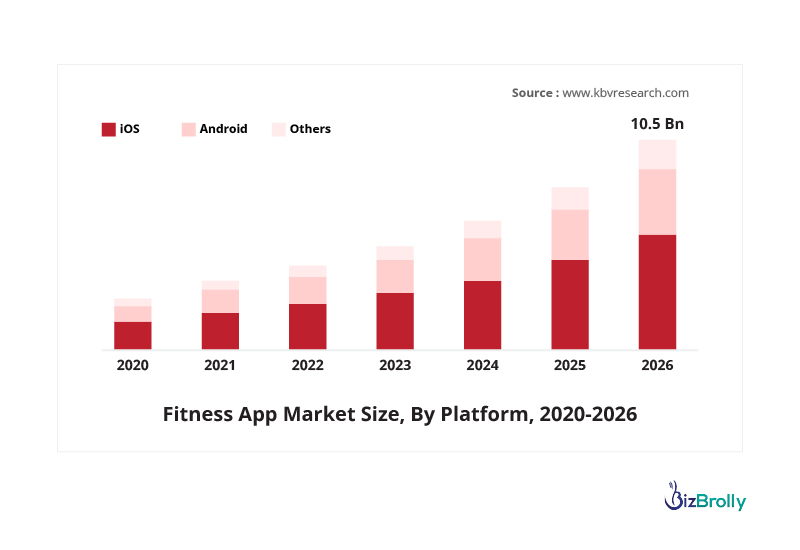
Whether you’re a startup founder with a passion for fitness, a gym looking to go digital, or a wellness brand expanding your services, building a fitness app can open new streams of engagement and revenue. But questions like “What features should I include?”, “How much will it cost?”, and “What tech is required?” often become roadblocks.
This blog is your comprehensive guide to building a successful fitness app—from choosing the right app type and features to understanding development phases and pricing. By the end, you’ll have a clear picture of what it takes to bring your fitness app idea to life.
Let’s get started!
The fitness landscape is evolving rapidly, and 2025 presents a golden opportunity for businesses to capitalize on health-conscious trends. Here are the key reasons why building a fitness app now makes strategic and financial sense:
Post-pandemic, people are more aware of their physical and mental health than ever. The shift toward preventative healthcare and daily activity tracking has created an eager audience looking for smart, digital wellness solutions.
Generic workout plans are out. Today’s users demand custom plans based on body type, goals, progress, and even mood. Fitness apps powered by AI, machine learning, and wearables are perfectly positioned to meet this need.
As remote work becomes the norm, users look for flexibility in everything—including their fitness routines. A mobile app enables on-the-go workouts, live sessions, and health tracking from home or while traveling.
From in-app purchases and premium plans to affiliate marketing, fitness apps open multiple revenue streams. Whether it’s selling fitness gear or meal plans, the app becomes more than just a service—it’s a marketplace.
Fitness is social. Integrating social feeds, challenge boards, and user leaderboards keeps engagement high. Apps that foster community tend to retain users longer and create loyal brand advocates.
Smartwatches and fitness trackers are now standard gear. A fitness app that syncs with devices like Apple Watch, Fitbit, or Garmin not only boosts data accuracy but also enhances user satisfaction.
In short, 2025 is the right time to build a fitness app that delivers value, creates engagement, and scales revenue. With the right development approach and features, your app could become the next big thing in digital wellness.
Before you start building your fitness app, it’s important to decide what type of fitness solution you want to offer. Fitness apps come in various forms, each targeting a specific user need. Understanding these types helps you align your business goals, audience expectations, and tech requirements.
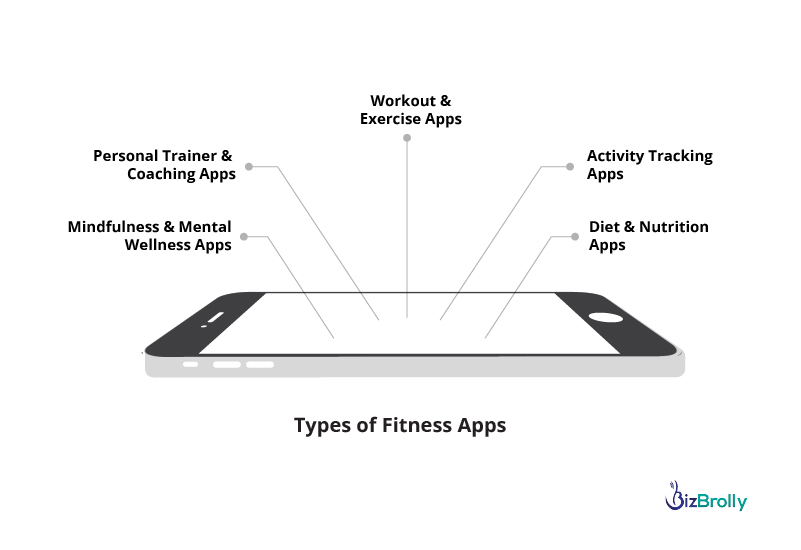
These apps guide users through workout routines—either with pre-recorded videos, AI-generated plans, or live instructor-led sessions.
Best For: Fitness coaches, gyms, yoga studios, and influencers.
Designed to monitor physical activity like steps taken, calories burned, distance covered, and heart rate.
Best For: Tech startups and companies focused on health analytics.
These help users plan meals, count calories, track water intake, and follow diet goals.
Best For: Nutritionists, health brands, and wellness companies.
These apps allow trainers to provide one-on-one coaching through chat, video, or customized plans.
Best For: Independent fitness coaches and training institutions.
Fitness isn’t just physical—it’s mental. Apps that offer meditation, breathing exercises, and stress-relief tools are in high demand.
Best For: Mental health startups and holistic wellness coaches
First impressions matter. Your app should welcome users with an intuitive onboarding process that gathers key fitness data—like age, gender, weight, fitness goals, workout preferences, and health conditions. This info helps the app recommend workouts or meal plans tailored to individual needs. Personalization increases engagement and creates a more relevant experience from day one.
Gone are the days of one-size-fits-all workouts. Using AI algorithms, your app can analyze user data and past activity to generate dynamic workout plans that adapt over time. Whether someone is training for strength, weight loss, or flexibility, the app should adjust based on performance, goals, and progress. This “smart training” approach keeps users motivated and helps them see real results.
Visual guidance is essential in fitness. Integrate a library of high-quality video workouts led by trainers. Categorize them by goal, duration, equipment needed, and difficulty level. For real-time interaction, live-streamed classes can create a community atmosphere—ideal for yoga, HIIT, or group challenges. Users should also have the option to download videos for offline use.
Your app should monitor and display key metrics like steps taken, calories burned, workout duration, heart rate (if wearables are connected), and goal achievements. A visual dashboard with charts and weekly summaries allows users to see progress at a glance. Tracking encourages accountability and motivates users to stay consistent.
Health isn’t just about workouts—diet plays a huge role. Including a nutrition module that offers meal planning, calorie tracking, barcode scanning, and macronutrient breakdowns makes your app a full-fledged fitness companion. Let users log meals, receive diet suggestions based on their goals, and even get reminders for hydration and meal times.
Users often abandon apps due to forgetfulness or lack of motivation. Push notifications are your silent coach—sending timely nudges for workouts, meal logs, water intake, or sleep tracking. These reminders should be smart (based on user behavior) and customizable, so users feel supported but not overwhelmed.
Add a dose of fun by integrating challenges, badges, progress levels, or leaderboards. Users can unlock achievements like “7-Day Workout Streak” or “100K Steps in a Week.” Fitness challenges (like 30-day plank or weight loss challenges) not only build habits but also foster a competitive spirit that keeps users returning.
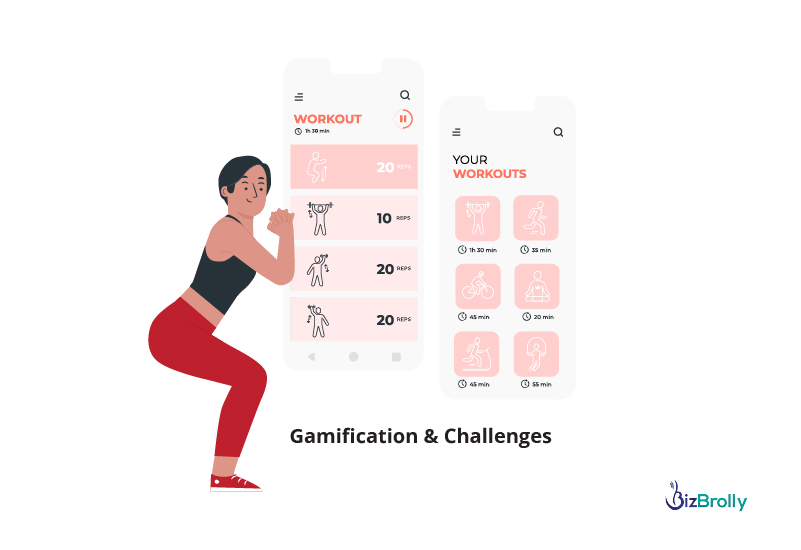
To enhance data accuracy and experience, your app should integrate with devices like Apple Watch, Fitbit, Garmin, or apps like Google Fit and Apple Health. This enables real-time syncing of steps, sleep, heart rate, and activity logs—making your fitness app smarter and more holistic.
Building a high-performance fitness app requires a thoughtful selection of technologies tailored to meet both user expectations and business objectives. The right tech stack ensures seamless performance, scalability, robust security, and the flexibility to integrate features like real-time tracking, wearable connectivity, and AI-driven recommendations. Let’s walk through the essential components of a fitness app’s tech stack:
For iOS apps, Swift is the preferred language due to its modern syntax, safety features, and excellent performance. Developers can also use Objective-C, though it’s more legacy-based. For Android apps, Kotlin is widely accepted as the standard thanks to its concise code and full compatibility with Java.
If the goal is to build the app for both platforms while saving on development time and cost, cross-platform frameworks like Flutter (by Google) or React Native (by Meta) are excellent choices. These allow you to write a single codebase that works on both iOS and Android, making them a popular pick among startups and businesses with limited budgets.
The backend is the powerhouse of the app—it handles user logins, manages workouts and progress data, processes payments, and sends out notifications.
Popular backend languages include Node.js (known for its speed and scalability), Python (especially when using Django or Flask for rapid development), and Ruby on Rails. The choice often depends on the developer’s familiarity and project scope.
Databases such as PostgreSQL or MongoDB store structured and unstructured data respectively. These systems help manage user profiles, progress logs, meal plans, and workout histories.
Cloud platforms like AWS, Google Cloud, or Microsoft Azure offer robust hosting, autoscaling, and data storage solutions. With microservices architecture and cloud support, you can ensure that your fitness app remains responsive, even during peak usage.
APIs built using REST or GraphQL ensure smooth communication between the app’s frontend and backend services.
Today’s fitness apps are smart—they track patterns and adapt. To power features like personalized workout plans, real-time performance feedback, and habit-building nudges, developers integrate AI and machine learning frameworks.
Libraries like TensorFlow, PyTorch, and Scikit-learn help create models that analyze user behavior, adjust routines, and provide insights. Platforms like AWS SageMaker or Google AI Platform accelerate training and deployment of these models.
For instance, if a user skips leg day consistently, the AI can gently remind them or alter their schedule to balance muscle development.
Fitness apps gain tremendous value by syncing with devices like smartwatches, fitness bands, and heart rate monitors. This connection allows real-time tracking of heart rate, steps taken, calories burned, and even sleep patterns.
On iOS, developers use Apple HealthKit, while on Android, they rely on Google Fit APIs. For third-party devices, SDKs from brands like Fitbit, Garmin, and Withings allow seamless integration.
This not only improves user engagement but also enables accurate fitness tracking without users manually inputting data.
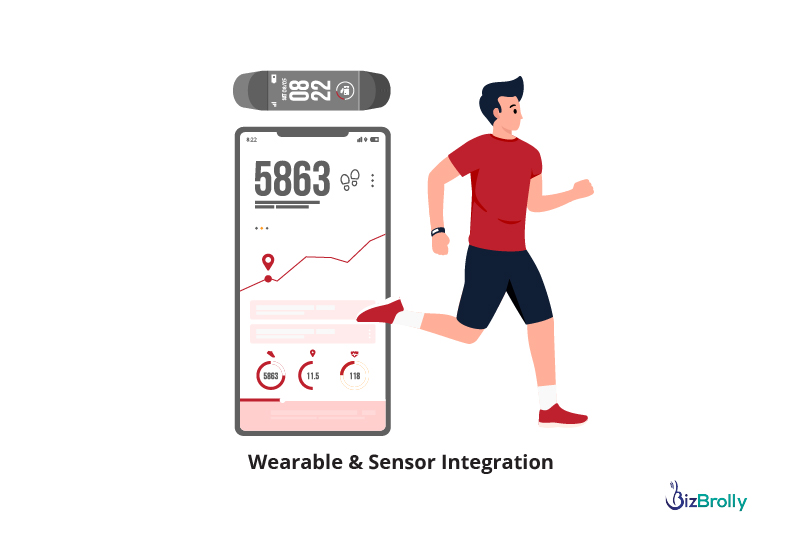
If your app offers premium plans, personal coaching, or nutritional services, integrating a secure and reliable payment gateway is a must.
Common choices include Stripe, Razorpay, PayPal, Apple Pay, and Google Pay. These platforms support one-time payments, subscriptions, and even split payments in case of group plans.
Security is critical—using PCI-DSS compliant gateways ensures user card details are encrypted. Techniques like tokenization protect sensitive information and prevent fraud.
Notifications help users stay committed. Whether it’s a hydration reminder, a daily goal update, or encouragement after completing a workout, push notifications improve retention.
Firebase Cloud Messaging (FCM) and OneSignal are commonly used for sending notifications. If your app includes real-time messaging with personal trainers or nutritionists, platforms like Twilio, SendBird, or custom-built WebSocket solutions can be integrated for smooth two-way communication.
Fitness app success relies on knowing how users behave. Integrating tools like Google Analytics for Firebase, Mixpanel, and Crashlytics helps track in-app activity, detect crashes, and understand user flows.
This data allows developers and product managers to tweak features, optimize user journeys, and make data-driven decisions that enhance app experience and business outcomes.
While users interact with the mobile interface, admins need a powerful backend dashboard to manage the app’s ecosystem. This includes overseeing user accounts, monitoring subscription plans, managing content like workouts and blogs, and reviewing performance stats.
Technologies like React.js or Angular are used for building intuitive, responsive dashboards. Coupled with a robust backend using Node.js or Laravel and databases like MySQL, this dashboard becomes the command center for app operations.
Building a fitness app involves several cost factors based on the features, complexity, platform, and development team’s geographical location. Here’s a breakdown of the primary elements that influence the cost:
The complexity of the app’s features will significantly impact the cost. For instance:
A fitness app requires an engaging and easy-to-use interface to keep users motivated. The design process involves wireframing, UI design, and UX optimization. Complex designs and animations may increase costs, especially if you want to develop for both iOS and Android.
Integration with third-party services like payment gateways, wearables, and social media accounts can add to the cost. These integrations often require additional APIs, testing, and maintenance.
A fitness app with user profiles, workouts, social features, and subscription models requires robust backend infrastructure. You will need to account for server costs, database management, cloud hosting, and maintenance. Cloud services like AWS, Google Cloud, or Microsoft Azure offer scalable solutions but can incur ongoing costs.
Quality assurance (QA) testing is essential to ensure that the app works flawlessly across all devices and platforms. Testing costs will vary depending on the scope of the app and the number of features. You will need to test functionalities, performance, usability, and security.
Once the app is launched, maintenance and regular updates are necessary to ensure smooth performance and user satisfaction. This includes fixing bugs, adding new features, or updating for new OS versions. Ongoing maintenance typically costs around 15-20% of the initial development cost per year.
Below is an estimated breakdown of the costs for developing a fitness app. The figures vary based on region and complexity.
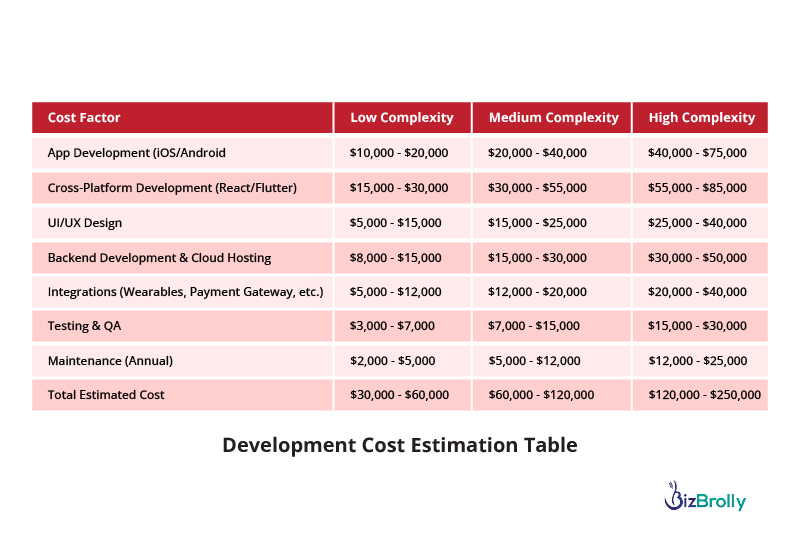
Building a fitness app that stands out in the competitive market requires a deep understanding of both technology and the user experience. At our company, we offer expert guidance and a comprehensive approach to help you turn your fitness app idea into a reality. From ideation and feature development to design and post-launch maintenance, our experienced development team ensures that your app is not only functional but also scalable and secure.
By leveraging the latest tools and technologies, we can help you build a cross-platform fitness app that provides an engaging user experience while keeping costs within your budget. Whether you’re aiming to create a simple workout tracker or a comprehensive fitness ecosystem with AI-powered features, we can help customize the development process to suit your unique business needs.
Our team also understands the importance of staying within budget, and we work closely with clients to provide transparent cost estimates and help manage resources effectively. Our maintenance and support services ensure your app remains up-to-date with regular updates and seamless performance.
Reach out to us today and let us help you bring your fitness app idea to life in a cost-effective, innovative, and secure way.

In recent years, artificial intelligence (AI) has rapidly advanced, with neural ...
Explore more
Cloud computing is transforming the manufacturing industry by making it easier t...
Explore more


D-23, Sector 63, Noida,
UP - 201307

141 Westgate Dr, Edison,
NJ - 08820

4 Black lion court, Mill road, Kent, UK – ME71HL

2207, 2220 Lakeshore Blvd W, Toronto ON- M8V0C1

94A Central Road, Jacanlee, Johannesburg 2194